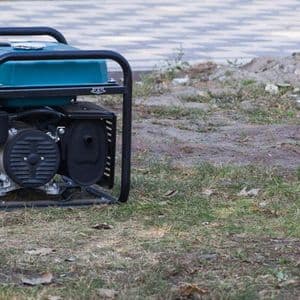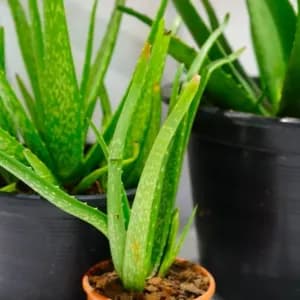If you are a morning glory lover, then you know how hard it is to grow a morning glory. You have to water it regularly, give it fertilizer and do a lot of other things. But, if you don’t take the time to do these things, then you will never see the beautiful blooms that you want. The good news is that you can grow morning glory from seed. You just have to take the time to follow the right steps.
Overview
Morning glory is a common name for a group of flowering plants that belong to the family Convolvulaceae. These plants are widely cultivated for their showy, trumpet-shaped flowers that open in the morning and close in the afternoon. Morning glory can be grown as an annual or a perennial, depending on the climate and the species. In this article, we will introduce some basic information about how to grow morning glory, such as choosing the right location, preparing the soil, planting the seeds, caring for the plants, and harvesting the seeds.
|
Common Name |
Morning glory, common morning glory |
|
Botanical Name |
Ipomoea purpurea |
|
Family |
Convolvulaceae |
|
Plant Type |
Annual |
|
Mature Size |
6–10 ft. tall, 3–6 ft. wide |
|
Sun Exposure |
Full |
|
Soil Type |
Moist, well-drained |
|
Soil pH |
Neutral, acidic |
|
Bloom Time |
Summer, fall |
|
Flower Color |
Purple, pink, blue, white |
|
Hardiness Zones |
2–11 (USDA) |
|
Native Area |
North America |
Morning Glory Species and Varieties
Morning glories are a group of flowering plants known for their vibrant and showy flowers that typically bloom in the morning and close in the afternoon. There are several species and varieties of morning glories, each with its own unique characteristics. Here are some popular morning glory species and varieties:
-
Ipomoea tricolor (Common Morning Glory): This is the most well-known and widely grown species of morning glory. It features large, funnel-shaped flowers in various colors, including blue, purple, pink, and white. Some popular cultivars include 'Heavenly Blue,' 'Pearly Gates,' and 'Flying Saucers.'
-
Ipomoea purpurea (Purple Morning Glory): Despite having smaller blooms, this species resembles the common morning glory. It is well-known for its flowers, which are deep purple with a white or yellow throat. 'Grandpa Ott' and 'Kniola's Black' varieties are in high demand.
-
Ipomoea nil (Japanese Morning Glory): This species is native to Japan and has been cultivated for centuries. Japanese morning glories exhibit a wide range of flower colors and patterns, often featuring intricate designs and unique color combinations. Popular varieties include 'Scarlet O'Hara,' 'Summer Skies,' and 'Chocolate.'
-
Ipomoea quamoclit (Cypress Vine): Although technically not a true morning glory, the cypress vine is often grown alongside morning glories due to its similar growth habit and attractive flowers. It has delicate, feathery foliage and produces small, star-shaped flowers in red, white, or pink.
-
Ipomoea indica (Blue Dawn Flower): Also known as the ocean-blue morning glory, this species is native to the tropics and features large, sky-blue flowers with a white or yellow throat. It is a vigorous climber and can quickly cover structures with its lush foliage and blooms.
How to Care for Morning Glory
Light
Morning glories need full sun, at least six hours a day, to produce their colorful blooms. They can tolerate some shade, but they will flower less and may become leggy. Choose a sunny spot with good air circulation for your morning glories.
Soil
Morning glories are not fussy about soil, but they prefer well-drained, moderately fertile soil. Avoid rich or heavy soils that may retain too much moisture and cause root rot. You can improve the drainage and fertility of your soil by adding some organic matter [1], such as compost or manure, before planting.
Water
Morning glories need regular watering, especially during hot and dry periods. Keep the soil moist but not soggy, and avoid wetting the foliage, which may lead to fungal diseases. You can reduce water loss by mulching the soil around the plants with straw, bark, or leaves.
Temperature and Humidity
Morning glories are warm-season plants [2] that thrive in temperatures between 65°F and 85°F. They can tolerate some frost, but they will die back in winter. If you live in a cold climate, you can grow morning glories as annuals or bring them indoors before the first frost. Morning glories are not affected by humidity, but they may attract pests and diseases in humid conditions.
Fertilizer
Morning glories do not need much fertilizer, as too much nitrogen may encourage leafy growth at the expense of flowers. You can apply a balanced fertilizer, such as 10-10-10, once a month during the growing season, or use a slow-release fertilizer at planting time. Do not overfeed your morning glories, as this may also make them more susceptible to pests and diseases.
How to sow morning glory seeds
Move the seedlings to a warm, draft-free and well-lit greenhouse or windowsill as soon as they emerge, where they can grow while being assisted individually by thin canes as the young plants quickly begin to climb. Transplant the seeds into individual, tiny pots and continue indoor growth until the end of May or the early June. Spend two weeks gradually acclimating them to the outer environment before planting.
Pruning and Propagation Morning Glory
Pruning involves cutting back the excess growth and removing any dead or diseased parts of the plant. This will help to maintain its shape and health, as well as encourage more flowering. You can prune your morning glory anytime during the growing season, but avoid pruning too much at once or during cold weather.
Propagation is the process of creating new plants from cuttings or seeds. You can propagate your morning glory by taking stem cuttings in spring or summer, or by collecting and sowing seeds in fall or winter. Cuttings should be about 4 to 6 inches long and have at least one node (where leaves join the stem). Remove the lower leaves and dip the cut end in rooting hormone. Then, insert the cutting into moist potting soil and keep it in a warm and bright place until roots form. Seeds should be soaked overnight in water before planting them in pots or directly in the ground. Keep the soil moist and cover the pots with plastic bags to create a greenhouse effect. Seeds will germinate in about two weeks.
Potting and Repotting Morning Glory
Potting and repotting morning glory is a simple task that can be done in a few steps. Morning glory is a fast-growing vine that produces beautiful flowers in shades of blue, purple, pink, and white. It can be grown in containers or in the ground, but it needs a trellis or a support to climb on. Here are some tips on how to pot and repot morning glory:
-
Choose a pot that is at least 12 inches in diameter and has drainage holes at the bottom. Fill it with a well-draining potting mix that is rich in organic matter.
-
Sow the seeds about 1/4 inch deep and 6 inches apart. You can soak the seeds overnight in warm water to speed up germination. Keep the soil moist but not soggy until the seeds sprout, which can take from 7 to 21 days.
-
Place the pot in a sunny spot that gets at least 6 hours of direct sunlight per day. Morning glory likes warm temperatures and will not tolerate frost.
-
Water the plant regularly, especially during hot and dry weather. Fertilize it once a month with a balanced liquid fertilizer during the growing season.
-
Prune the plant as needed to control its size and shape. You can also pinch off the tips of the stems to encourage branching and more flowers.
-
Repot the plant every year or two, or when it becomes root-bound. Choose a slightly larger pot and use fresh potting mix. Transplant the plant carefully, trying not to disturb the roots too much. Water it well after repotting and place it in a shaded spot for a few days to help it adjust.
Common Pests and Diseases
Morning glory is a popular ornamental plant that produces beautiful flowers in various colors. However, it is also susceptible to some common pests and diseases that can affect its growth and appearance. Some of the most common problems are:
-
Aphids: These are small, soft-bodied insects [3] that suck the sap from the leaves and stems of morning glory. They can cause yellowing, curling, and distortion of the foliage, as well as transmit viral diseases. To control aphids, spray the plants with insecticidal soap or neem oil, or release natural predators such as ladybugs or lacewings.
-
Spider mites: These are tiny, spider-like creatures that also feed on the plant sap and create fine webbing on the undersides of the leaves. They can cause the leaves to turn yellow, brown, or gray, and eventually drop off. To control spider mites, increase the humidity around the plants, wash them with a strong jet of water, or use miticides.
-
Leaf spot: This is a fungal disease that causes circular or irregular brown spots on the leaves, sometimes with yellow halos. It can reduce the photosynthesis and vigor of the plant. To prevent leaf spot, avoid overhead watering, remove infected leaves, and apply fungicides.
-
Rust: This is another fungal disease that causes orange or brown pustules on the leaves and stems of morning glory. It can also reduce the plant's health and flowering. To prevent rust, provide good air circulation, avoid wetting the foliage, and apply fungicides.
FAQs
How long does it take for morning glories to grow?
If growing indoors, chip the seeds and immerse them in warm water for a day before providing a steady soil temperature of 70 to 85°F. The seeds ought to develop in 5 to 21 days, however it might take longer outside.
How long does it take for morning glory to grow from seed?
Morning glories might take between 2.5 to 3.5 months to bloom after being planted from seed. The optimal time to plant morning glories from seed indoors in northern locations with chilly winters and brief growing seasons is four to six weeks before the final day of frost.
What’s the best location to grow morning glories?
A wet yet well-draining soil is ideal for growing morning glory. Morning glories may grow almost anywhere, although they do best in neutral soil with a pH range of 6.0 to 6.8. However, they blossom more successfully on soil with moderate levels of organic matter. Learn how to test soil pH in order to achieve this.
The New York Garden works under restricted procurement guidelines and relies on peer-reviewed studies and studies conducted by academic organizations. Tertiary references should be avoided. For more information on how we ensure our material is correct and up to date, please visit our editorial policy.
-
Organic matter - U.S. DEPARTMENT OF AGRICULTURE
-
Warm-season plants - The Pennsylvania State University
- Soft-bodied insects - United States Department of Agriculture















